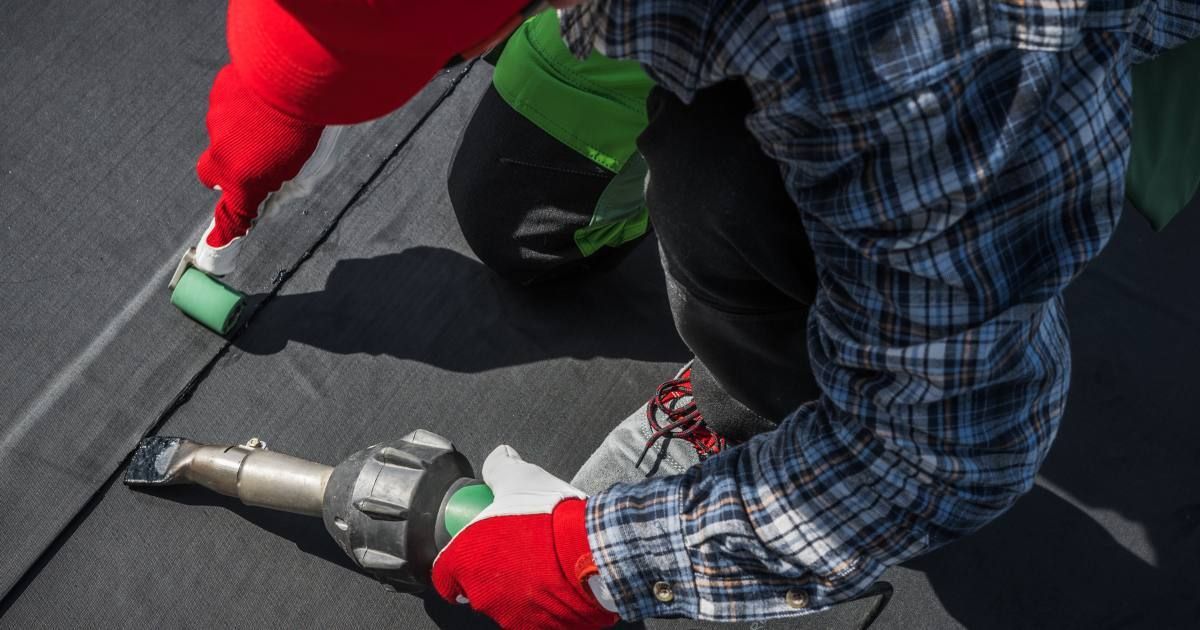Body or Drone: Who's the Better Roof Inspector?
Inspections for big and elaborate structures such as your home's roof may come with challenges and also run the risk of being costly and dangerous.
Unlike past roofs which were quite basic, contemporary roof construction is often distinctive and sophisticated in its design. In addition, regardless of the design, complexity, or scale of the roof, owners and builders must adhere to all relevant building codes and regulations when constructing them, making their inspection more complicated and time-consuming than it once was. That's why using technology for roof inspections - specifically drones - has become increasingly popular in recent years especially with the new advances in drone technology such as infrared cameras, longer battery life, and the ability to create 3D models.
There are clear benefits to using drones for roof inspection purposes, but are they the best option as compared to the old-fashioned manual inspection process? Below we'll talk about the benefits and drawbacks to each.
Benefits to Drone Inspection
The entire process of performing a traditional physical roof check can be dangerous. There are several hazards to moving around on a rooftop, and home inspectors have been seriously injured while completing roof inspections. Complex designs, vast heights, damaged roofs and buildings, as well as difficult-to-access areas, can all spell dangers to workers, residents, and anyone in the immediate vicinity.
One of the key advantages of employing drone technology is that a wide range of data can be collected without endangering lives of home owners and inspection personnel. Drones reduce or eliminate most dangers, including falls, roofs crumbling beneath the inspectors’ feet, and other hazards involved with drone roof inspection.
The use of drone-based roof inspections with an experienced pilot is both safe and efficient. The inspector may remain safe on the ground while flying the drone above the property to scan and examine the roof.
A typical building inspection is not always simple and can require some planning, which means expending both time and resources.
Once a client requests an inspection from a roofing company, modern technology such as drones make it possible to complete in a short amount of time. Because drones don’t require the use of climbing and access equipment, the drone-based examination may begin as soon as the crew arrives on site with no need for manual measurement and less risk of human error. Furthermore, drones complete the assessment in a fraction of the time that traditional approaches require making for a quick inspection.
Using a drone for roof inspection purposes has the potential to dramatically reduce inspection
expenses. There's no need to buy or carry expensive scaffolding, lifts, ladders, or other climbing gear. Furthermore, the process does not require as many personnel, resulting in lower equipment and labor expenses.
Because of the time and labor savings, numerous building inspections may be completed in a single day. If there are enough drone pilots and equipment, multiple inspections can be done at the same time. Through the internet and high-quality cameras, the inspector may simultaneously watch all of the inspections through aerial footage from a remote office.
Benefits to Manual Roof Inspection
Some of the benefits of manual roof inspection is human experience and catching the small stuff.
Physically being on a roof is the best way to hone a roofing talent. Indeed, as with any trade, there’s nothing like years of exposure and experience.
That’s why there’s no good substitute for checking a roof in person. Drones can only know what they are programmed to, so if drones come across something they’re unfamiliar with, potential issues may go undetected. Years of experience give roofing professionals invaluable wisdom to understand the vast range of small details that drones may be unable to discern.
Dry rot or disconnected underpayment will not be caught by a drone. While a drone can collect accurate measurements, it’s unable to discern the often-subtle issues that need correction and that are pivotal to quality and thorough roof repair. A drone, or example, is unable to detect soft places that may obstruct water drainage as well as other minor faults which if left unaddressed, will develop into serious future concerns.
Roofers strive to catch all of the intricacies of every roof we work on. We can't identify all of these problems by taking aerial images, giving the client a quote, and then departing. There is no better way to obtain the information we want than to place a ladder against the side of the house and ascend to the top. There's just no substitute for this tried-and-true method.
All Things Considered, What Method is Better?
Drone technology is a valuable resource and has improved the process for a basic inspection. So while roofing technology has evolved significantly over the years, it doesn’t imply that you should rely on it to complete the job. Using a drone for roof inspections is great when it’s unsafe for someone to be physically on the roof or if the roof needs a quick and simple inspection.
Whenever possible, though, having an experienced professional on the roof is the best option. This ensures that roofing experts evaluate every inch of their clients' roofs before providing an accurate quote, making possible the best roof installation or repair.
There’s no doubt about it, when it’s safe to do so, there’s no substitute for roofing contractors being physically on the roofs they install and repair.



